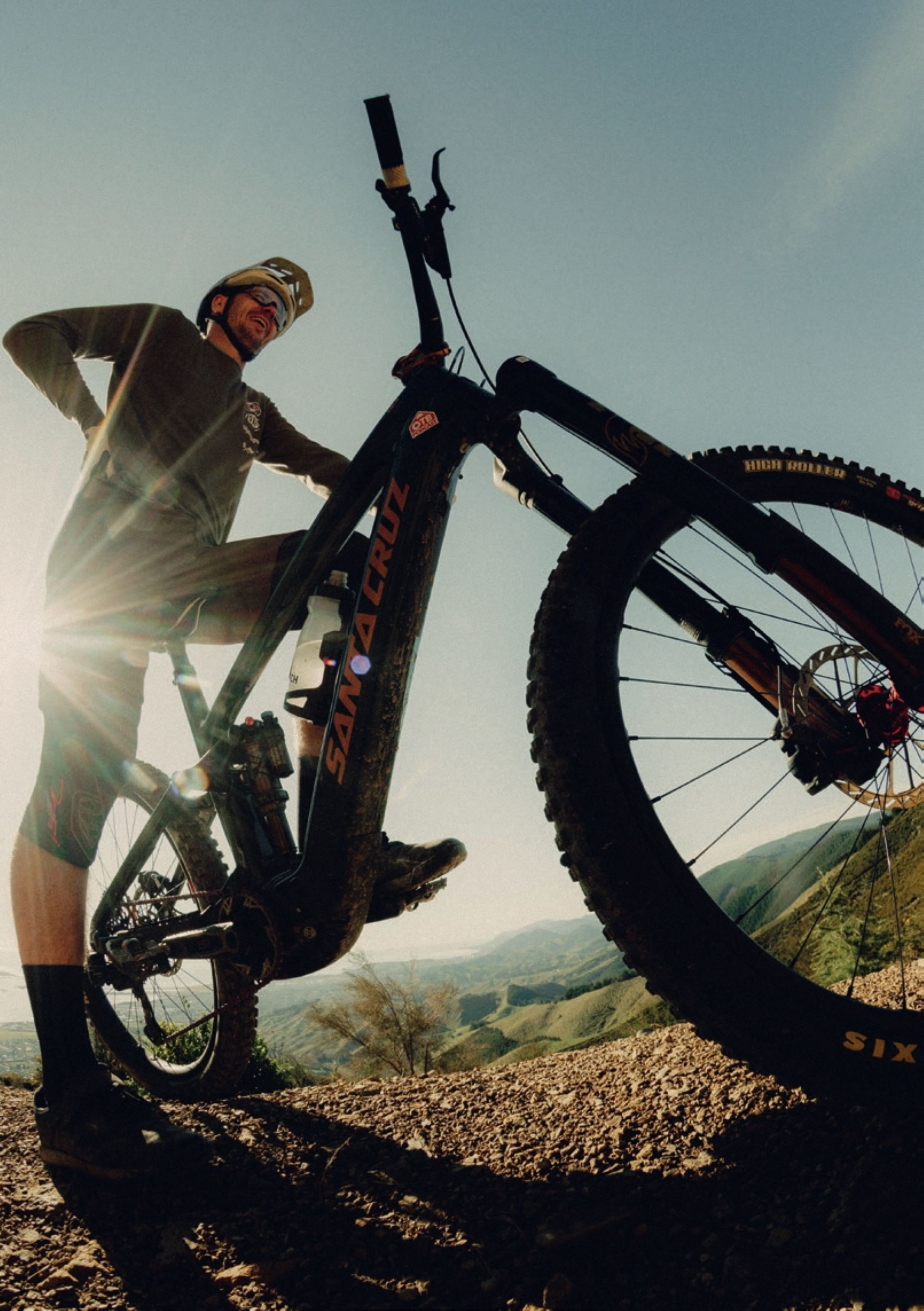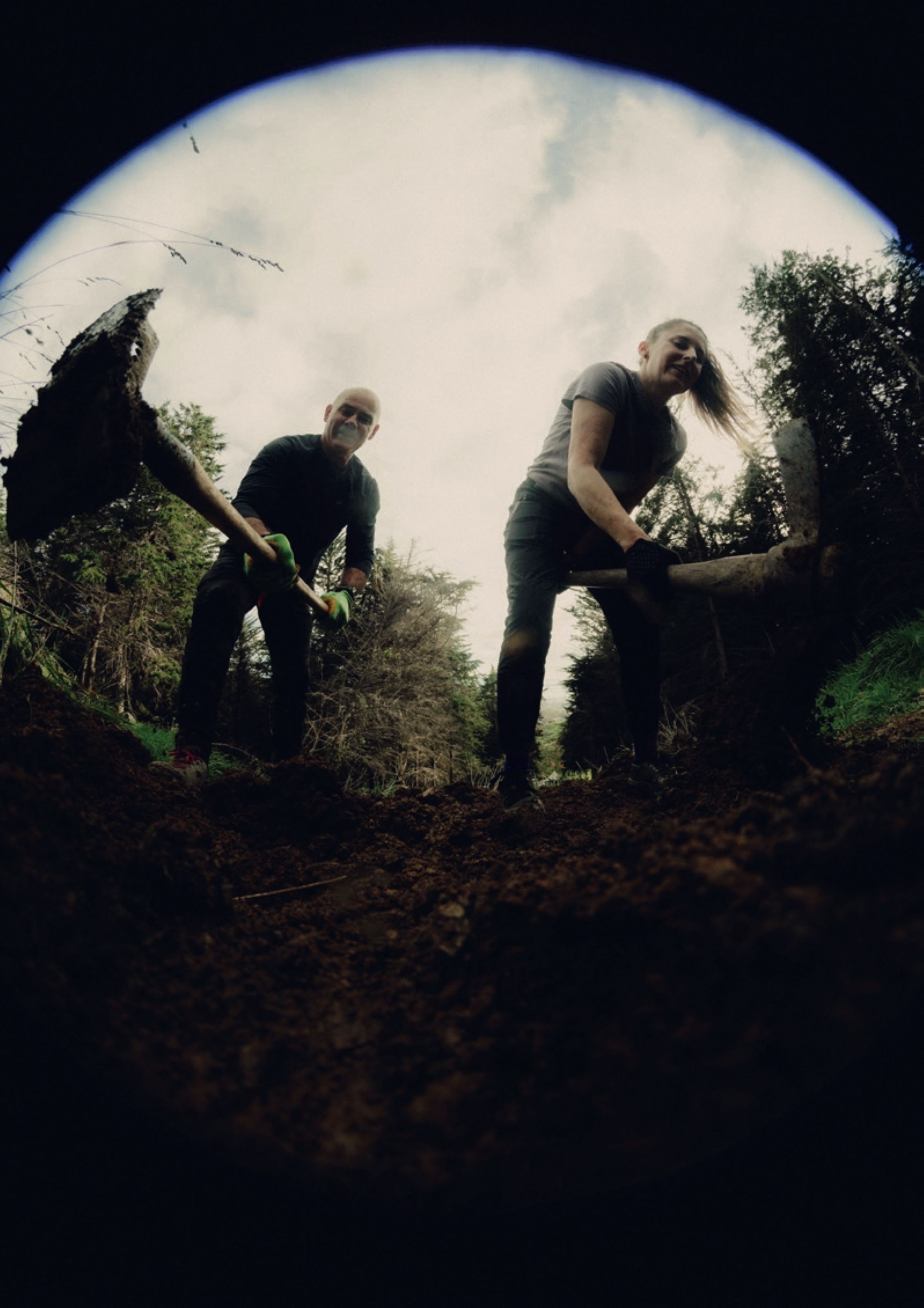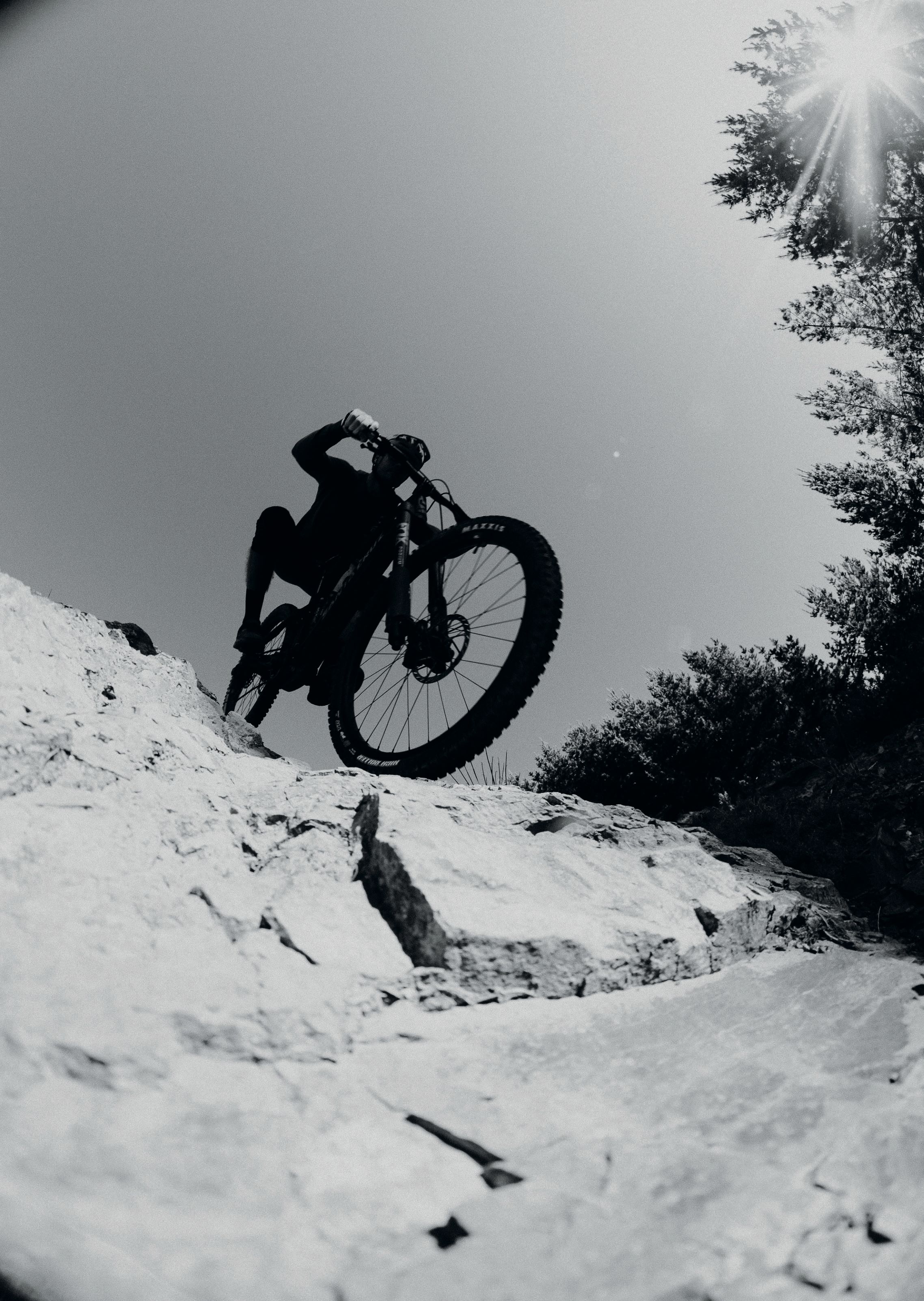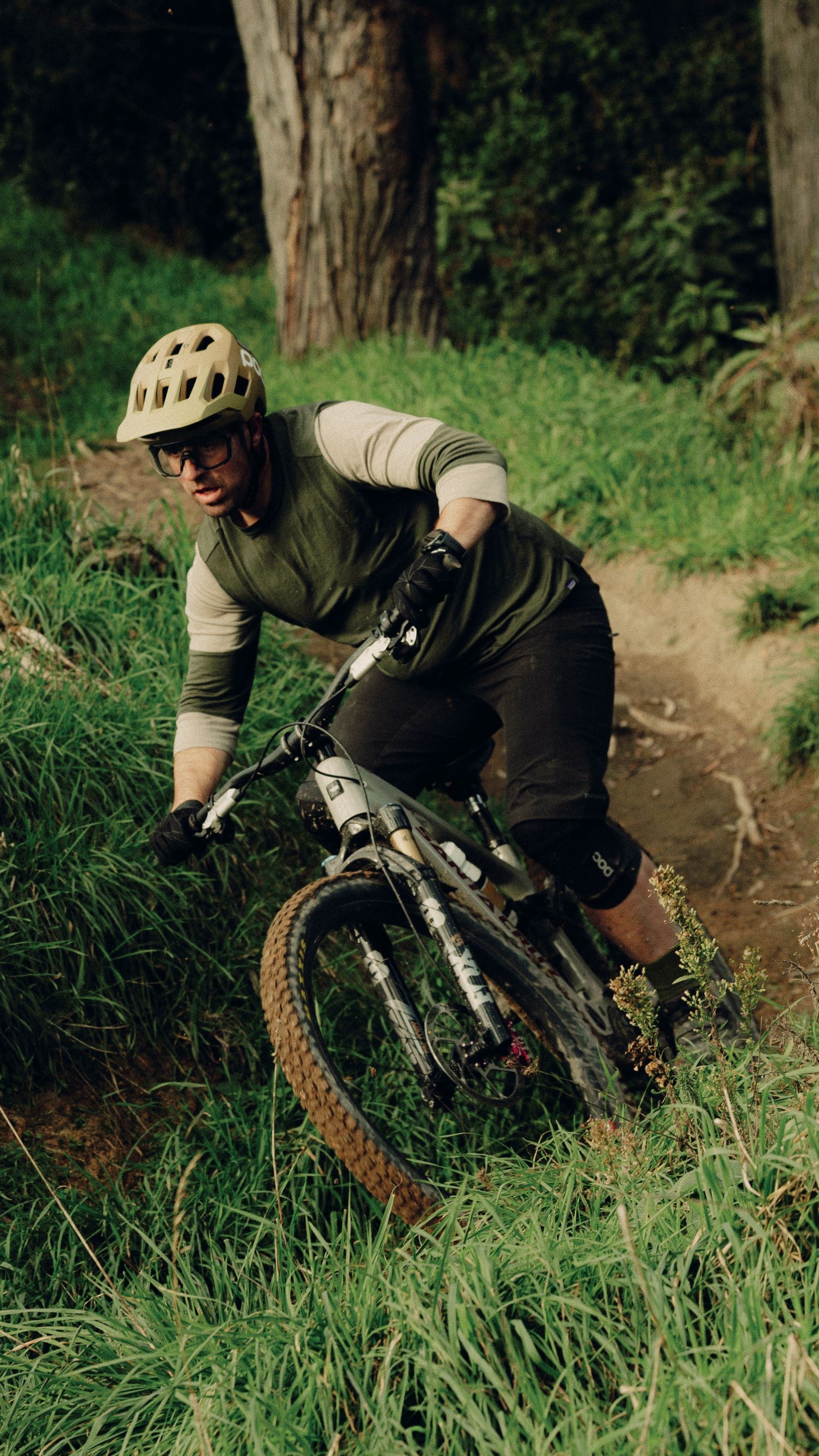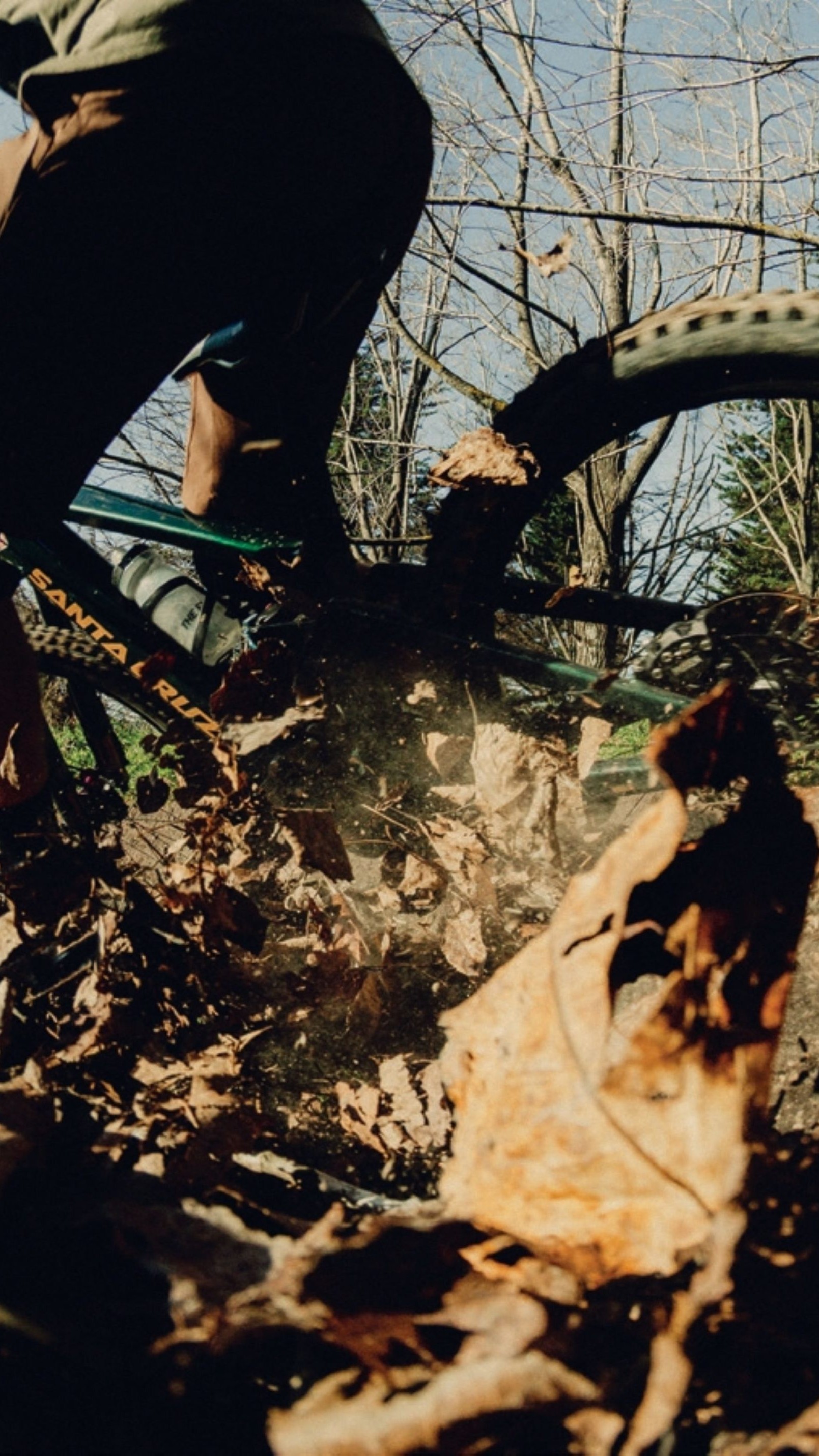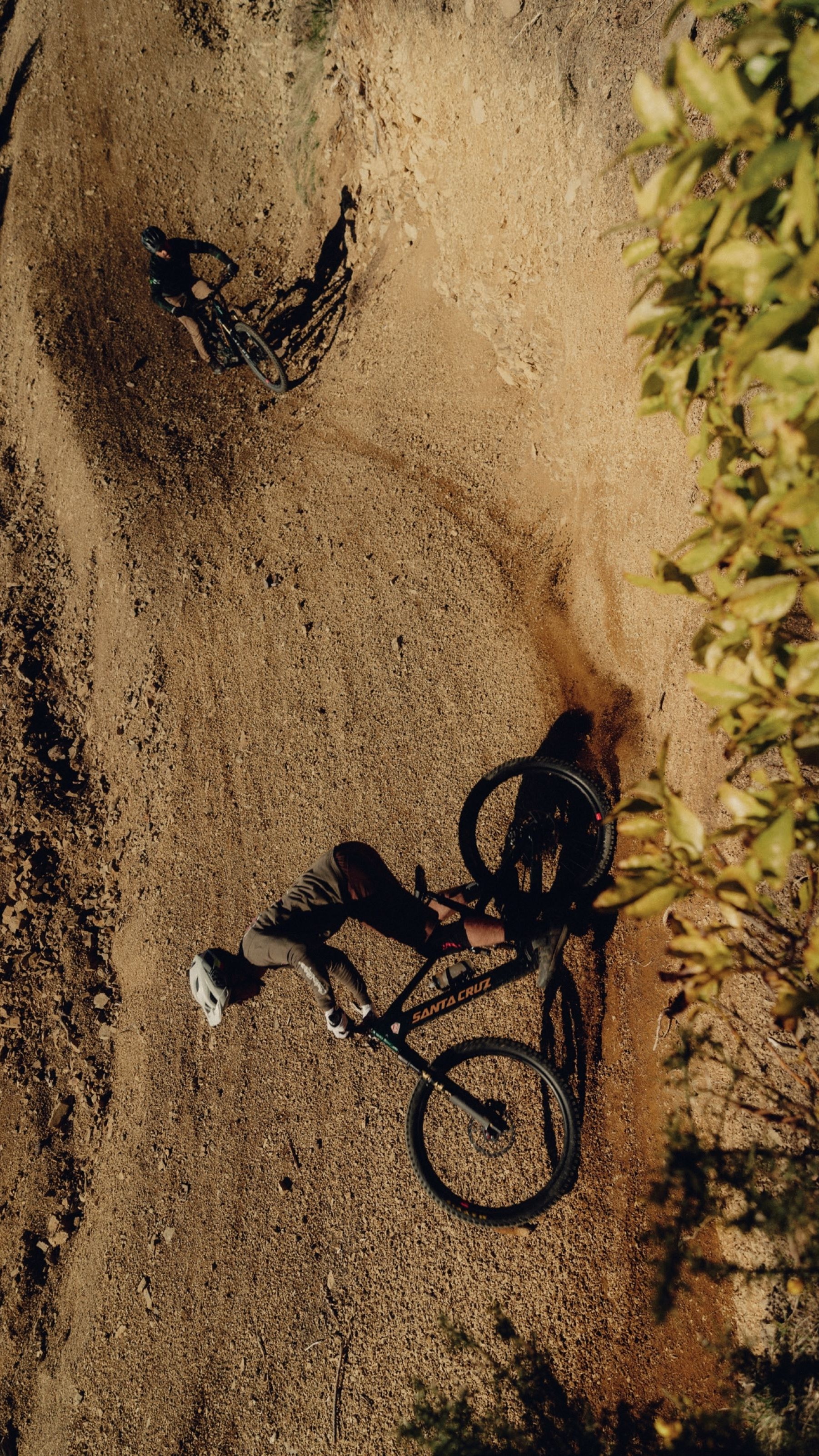Words Liam Friary
Images Henry Jaine
The history of this land stretches back to the early days, when farmers burned the native bush to clear it for farming, with scrub burning remaining a regular practice until the 1980’s. In the 90’s, the Griffin family purchased the property and after one rotation of radiata pine, began transforming it from a commercial forestry operation into something special for the community.
Trail development began in earnest in 2014 through a partnership with the MTB Trails Trust, with the first stage network completed by 2018. After the final pine harvest in 2019, the Griffin family made the pivotal decision to retire the forest from commercial production and focus entirely on recreational use, amenity and environmental restoration.
Post-harvest, the Silvan Forest team moved into hands-on management, investing in rebuilding and expanding the trail network, with support from local volunteers and sponsors. Their vision extends far beyond just mountain biking—they are intending to create an industry-leading example of native regeneration, seed source enhancement, and strategic placement of exotic species to create a unique and enduring forest and recreation asset for the wider community. Today, Silvan Forest MTB Park boasts over 40 kilometres of single-track trails designed for riders of grades 3 to 6, all of which are accessible year-round and completely free to the public. The forest now features a diverse mix of macrocarpa, blackwood, eucalyptus, and wonderful patches of original old- growth native bush—along with the new plantings and naturally regenerating bush, creating riding surfaces and experiences quite different from anything else in the Nelson Tasman area.
Since those initial trails, significant progress has been made with permanent forest plantings, an expanded trail network featuring several new Grade 5 options that showcase the steeper terrain and original native gullies, creating more seamless linkages between the Silvan and the adjacent Kingsland Forest trail network, and the establishment of new facilities including the ‘Silvan Steps’ amphitheatre as an events venue.
Matt Griffin, alongside his father Rick, has been at the helm of plans to transition the forest and significantly expand the trail network in the coming years. Matt welcomed us down to experience their trails. I was eager to ride this location, which started as a working pine forest and is evolving into a solid destination for biking in Nelson Tasman—aiming to emulate the huge success of other unique local destinations like Cable Bay Adventure Park and the Wairoa Gorge.
I had to dodge floods, and some of the terrible weather patterns the top of the South Island has been battered by, just to get there. This meant our original plans had to be scrapped, and I had to find new dates on the calendar and refresh the weather apps to find a good window. It wasn’t easy in the middle of winter! Luckily, some clear and cold weather was forecasted, so I jumped on the opportunity to make this trip happen. The main crew would consist of Matt Griffin, Kieran Bennett, and myself. Amanda Pearce and Chris Mildon would also join us for one morning, to ride their hand-dug trail, De La Luna—which I’ll expand on later in the piece.
The Riding
The trail network at Silvan Forest showcases remarkable diversity, featuring mixed terrain and carefully crafted trails that cater to all riders’ abilities. The main climbing route—Alpha trail and its various sections—proved efficient and enjoyable thanks to the Santa Cruz Vala I was testing (see the full review in this issue). As the trail winds its way up the hillside, it offers expansive views across Tasman Bay. What sets Silvan apart is its strategic positioning on predominantly north-facing slopes that receive generous sunlight throughout the day. This geographic advantage makes it an exceptional year-round destination, particularly during the shorter winter months when other trails might be shrouded in the shadows and are often damp. The open canopy allows the sun’s rays to dry out the trails creating pleasant riding conditions even in the depths of winter. Even after a week of significant rainfall leading up to our visit, the trails remained in good condition. I particularly welcomed this after a rather wet winter in the North Island.
From the elevated sections, riders can choose their descent based on appetite and ability. The Santa Cruz Vala allowed me to navigate Silvan’s approximately 40 kilometres of singletrack efficiently. The driving trail development philosophy from 2014 has been ‘most of the trails for most of the riders’, so while the core trail network was built around intermediate-grade trails, recent developments have pushed the boundaries to include more challenging options spanning grades 4-6, ensuring progression pathways for advancing riders. The dedicated team at Silvan Forest, led by Matt Griffin and Chris Mildon, alongside the dedicated and unruly volunteer trail builders from the Richmond Hills Trail Carvers, have ambitious plans to add another 30 kilometres of trail within the next five to ten years. Many of these future additions will wind through areas of stunning original native bush, which will add further diversity to the trail network. As the replanted hillsides mature, they will provide a contrast to today’s open, fast- flowing trails, offering riders entirely different perspectives on the same landscape. I believe the diversification of this once-cleared then commercially forested, and now regenerated, piece of land for recreational purposes is a real gem for us and future generations.
Silvan Forest MTB Park delivers a compact yet remarkably diverse riding experience across varied terrain. During our visit, we sampled many of the park’s signature trails, including People’s Choice, Ari Mahoe, Exodus, Goliath, Spittrock, CrankYanker, De La Luna and Jericho, among many others. The trails encountered everything from fast and flowing descents to technical jump lines and tighter, rockier sections. Some trails are gnarly hand-cut from top to bottom, creating that classic, hard, techy riding that is so unique to Nelson. Despite the terrain’s natural steepness, most trails offer a good fall line. You can tell the trails have benefitted from the thoughtful planning of features, corners which ensure speed is maintained and elevation loss is good without being ultra rapid. Nearly all trails maintain those stunning bay views, making even the most challenging sections rewarding. The quality of trail construction and ongoing maintenance reflects the serious dedication that Matt, Chris and the Trail Carvers invest in the park. Several super fun and accessible freestyle sections have also been added over the last 12 months, by Kurt Lancaster and the team from Living Trails, which have ensured even more diversity to the Silvan network, and see scores of kids heading into the park each day after school.
De La Luna trail showcases what can be achieved when passion meets persistence. It first emerged from the Juliana Bicycles NZ trail project during a particularly challenging year for the mountain bike industry—we’ve all heard the stories of the boom-and-bust cycle of the industry during and post pandemic. Instead of getting hung up on those industry issues, the team at Hyperformance Hardware (Juliana Bicycles distributor) decided to put time and effort into building a new trail. This provided an opportunity to channel their energy into something lasting, resulting in the 1100 people- hours of work that went into creating De La Luna.
Leading the charge was Amanda Pearce, Sandra Williams, Mike Stylianou and Chris Mildon (the trail builder and gorse-cutter extraordinaire) who spearheaded this ambitious hand-digging operation. Chris had a strong and loyal core digging team of about eight people around him that were recharged at the end of each dig by baked treats. The trail building crew turned out rain or shine for around 50 weeks, and there were about 80 different people who can proudly say they put some mahi into this trail over the year. The trail demanded new skills and serious physical endurance as the team battled through gorse, clay, and rock across all four seasons, and required a high level of discipline to maintain the grade 4 target. De La Luna is built through some steep, typical Nelson terrain, and while it would have been easier to fall into the dreaded grade increasing fall-line trap, good discipline with maintaining target gradients at every point ensured the right result. The trail’s name, De La Luna, honours Luna, the Griffin family’s black dog, who roamed with us on most of the trails we rode. After one year of hard work and dedication the trail, with a perfect 10-degree gradient, was ready for all to ride.
As soon as you drop into De La Luna, the trail immediately reveals its hand-built character— every corner, camber, and feature carry the essence of handmade craftsmanship over machine precision. The trail’s Grade 4 technical demands become apparent quickly, with exposed sections that require genuine commitment and bike handling skills. There’s something refreshingly honest about the trail. It certainly doesn’t try to flatter your riding—instead, it challenges you to rise to its standards. The hand- cut nature means every one of the 20 turns is slightly different, preventing you from settling into a rhythm and keeping your attention fully engaged with the terrain that lays in front of you.
What makes De La Luna truly special is its diverse character across the 2.1-kilometre descent. The trail opens with those wide, exposed views across Tasman Bay, offering brief moments to appreciate the landscape before diving back into more demanding terrain. As you progress, the trail transitions through tighter, more intimate sections where the hand-built features really shine, before eventually delivering you into some nice native bush sections toward the exit. The trail rewards patience and good bike handling over raw speed.
Perhaps the slump in the bike trade isn’t a bad thing after all, as it could lead to the construction of more trails for everyone. However, a balance between the two would be beneficial. I’m impressed by what a year’s worth of hard graft can achieve. I commend Hyperformance Hardware for making something for the mountain biking community rather than getting bogged down by the state of the bike industry.
Hospitality
There’s accommodation at Silvan Forest with recently constructed rentals at the bottom of the hill. These two bed/two bath units feature sleek fit-outs and stylish furnishings, making grabbing some grub mid-ride or unwinding after days on the trails easy. While the Nelson Tasman region offers plenty of accommodation options, these deliver something uniquely valuable—you’re literally at the trailhead. I particularly liked that there’s no morning drive to get to the goods, no packing bikes onto cars after a long ride. The well-stocked kitchen allowed us to easily prepare meals and fuel up before heading straight back to the trails, creating that seamless flow between riding, resting, and riding again.
When you factor in the region’s exceptional craft beer scene, Nelson Tasman truly shines. The top of the South Island is home to some of New Zealand’s finest hops, and after experiencing Silvan’s trails, we sampled these legendary ingredients at Eddyline Tap Room, which doubles as a taqueria (Eddyline also are the dearly loved primary fluids sponsor of the Trail Carvers). The place was bustling on Friday night—always a good sign—with a relaxed atmosphere that perfectly complemented their excellent beer and delicious food. Sitting there, post-ride, with a cold beer in hand and food arriving at the table, I realised that it’s not just about the trails—it’s also about the people who surround and support riding culture. Sometimes, the best part of a riding destination isn’t just the trails themselves, but how you connect with the people behind the scenes who make everything seamless for us to enjoy. Nelson Tasman has a very high concentration of trails and a very engaged riding community, which is evident every time I visit here.
What the Griffin family and the local community have created at Silvan Forest goes well beyond just another mountain bike park. They’ve transformed a working pine forest into something genuinely special: a 40-kilometre network of thoughtfully built trails that showcase both the natural beauty of the Nelson Tasman region and the potential of community-driven trail development. The transition from commercial forestry to recreational haven tells a story that’s becoming increasingly relevant as other local (and national) landowners investigate alternate uses for steep terrain close to residential populations. As historic uses become less viable, landowners are choosing a long-term strategy with a community focus, rather than short-term profit.
The riding itself delivers on multiple levels. Those north-facing slopes aren’t just a sun trap—they enable pleasant riding all year round, especially during winter riding conditions when other locations could be dark and dank. The trail network’s continuing evolution from intermediate- focused routes to the current mix spanning grades 3-6 means there’s progression available, whether you’re starting out or pushing limits. Silvan Forest MTB Park offers a variety of trails, each with its own unique features and these readily complement the wide range of excellent MTB options in the wider region. Even with only a few days, I was able to experience a wide range of Silvan’s trails and will be venturing back.
Perhaps what impressed me most was how everything connects seamlessly. The trailhead accommodation means you pedal from the front door, the well-maintained trails reflect serious ongoing investment and commitment, and even the local scene—from Eddyline’s craft beer to the broader Nelson Tasman riding community—feels aligned with what Silvan represents. With plans for another 30 kilometres of trail development over the next five years, Silvan Forest is clearly just getting started. The vision of combining native regeneration with world-class mountain biking creates a template that other destinations would do well to follow. Sometimes the best riding experiences aren’t just about the trails themselves, but about finding places where everything from the terrain, the community, and the vision comes together perfectly. Silvan Forest MTB Park delivers exactly that kind of experience.





